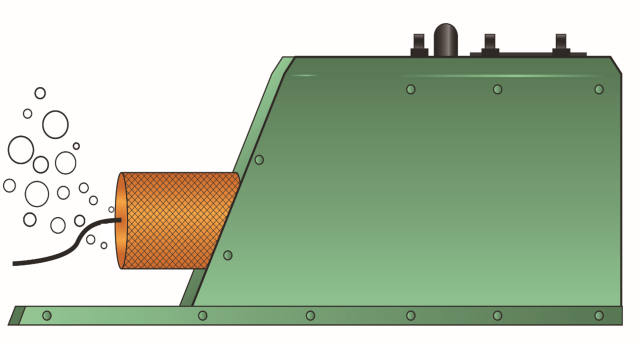3D Printing Research at EPA
Studies have found that the 3D printing process releases gases and particulates which could pose health risks to users. These emissions include volatile organic compounds, referred to as VOCs, some of which are hazardous to human health when inhaled. In addition to VOC emissions 3D printers can release particles of ultrafine size (1–100 nm), and researchers have found that they are small enough to be deposited deeper into the respiratory system. These particles can be more difficult to clear from the body than larger solid particulates.
What material do these emissions come from?
Common 3D printer ‘ink’, called filament, is a thermoplastic that is partially melted during the printing process to form the desired 3D object, one layer at a time. There are different types of filaments to choose from, with the most popular material choices being poly-lactic acid (PLA) and acrylonitrile butadiene styrene (ABS). PLA filament is derived from renewable sources like corn and is advertised for its abilities to biodegrade and reduce greenhouse gases during use. ABS is derived from processing petroleum and is often used in industry because of its chemical resistance.
EPA researchers have conducted studies to examine the emissions of these filament types, finding that the different filaments release different amounts of respirable particles during the printing process. Learn more:
Particle emissions from fused deposition modeling 3D printers: Evaluation and meta-analysis.
Recent 3D Printer Emissions Research at EPA.
Filament Extruders

Instead of using pre-made filament, users can use filament ‘extruders’, which create feedstock for 3D printers from raw plastic pellets. EPA researchers studied these extruders to build their understanding of any additional emissions that would result from extruder use. Through their research, they found that ultrafine particle emission rates from extruders were comparable to those found in other 3D printer studies, concluding that filament extruders may present additional exposure to these particles for users. There is also an expanding market for a range of specialty filaments with additives such as metal particles, metal–containing flame retardants and others. These additives may pose additional health risks.
Learn more:
Particle and volatile organic compound emissions from a 3D printer filament extruder.
Human exposure to metals in consumer-focused fused filament fabrication (FFF)/ 3D printing processes
Children’s exposure to 3D printing emissions
The availability of published studies evaluating the effects of 3D printer emissions on respiratory health is limited, and all have focused solely on adults. However, 3D printing has become a popular educational tool, meaning children and teenagers could be regularly exposed to 3D printer emissions. This is of concern because children may be a vulnerable population, meaning that the effects of these emissions could disproportionately harm them. Children may be exposed to high concentrations of 3D printer ultrafine particles due to uncontrolled use of the printers within confined spaces, such as classrooms and libraries.
EPA researchers used an open access model called multiple path particle dosimetry model (MPPD v3.04) to predict the amount of particles that may be deposited from 3D printer emissions in different regions of the respiratory tract. Specifically, these models focused on children of various age groups from three months to eighteen years old. From this modeling, the researchers found that the greatest predicted mass deposition was highest in the range of nine to eighteen-year-olds, and that the greatest mass deposition was predicted to occur in the lungs. Learn more:
3D printer particle emissions: Translation to internal dose in adults and children.
The National Institute for Occupational Safety and Health recommends that 3D printer users protect themselves by using materials with lower emissions, using enclosures for 3D printers and ventilation to capture chemical emissions, and reducing time spent near the printer while it is running. Additional resources about 3D Printing safety:
3D Printing with Filaments: Health and Safety Questions to Ask
Characterizing 3D Printing Emissions and Controls in an Office Environment
